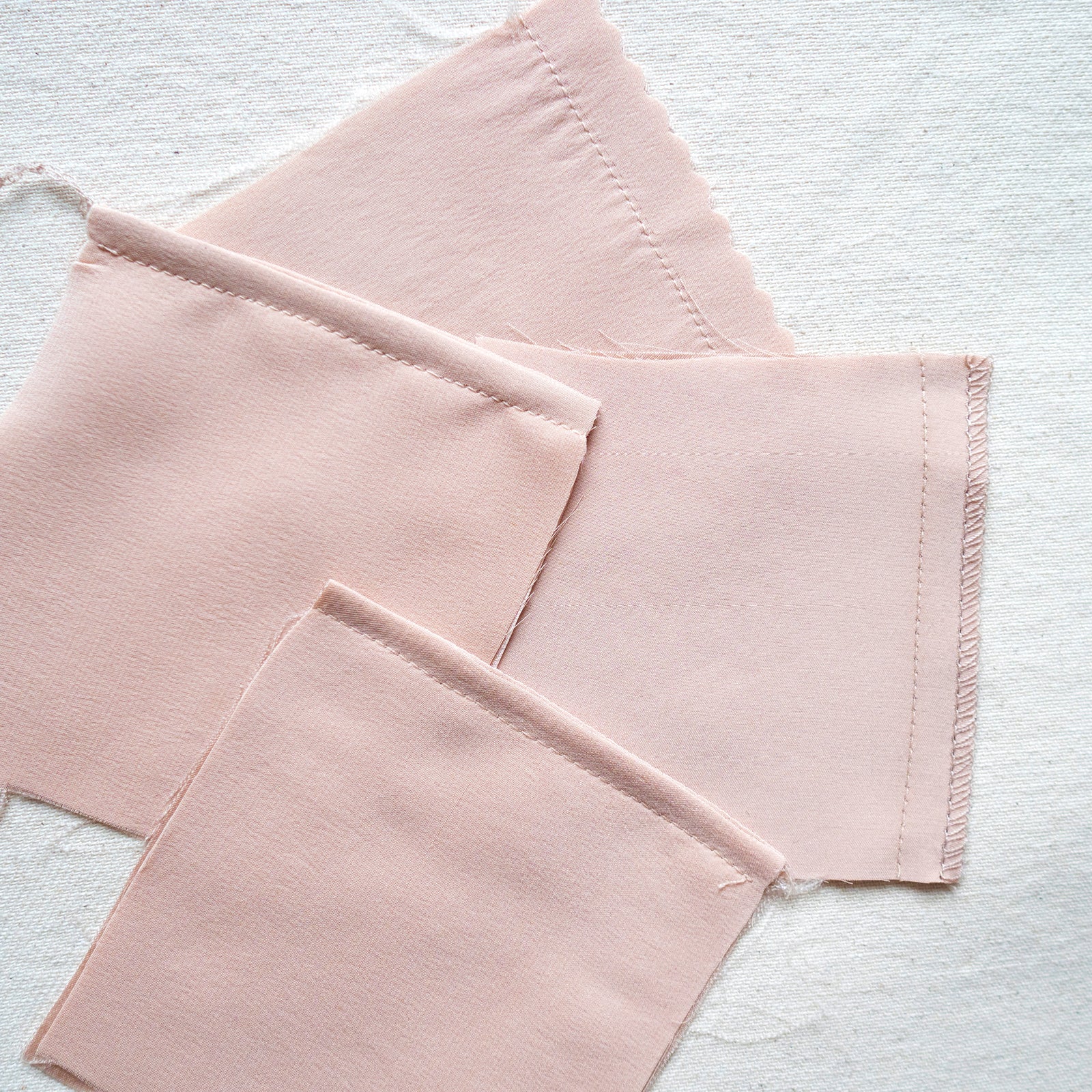
In our pattern instructions we detail the construction methods that help you get the most beautiful and professional looking results. That said, as a sewist, you know that there are a variety of ways to sew up any garment and choosing which methods to use can be half the fun!
If you have ever discussed sewing with me you know that I believe that the methods you use to sew your garment comes down to the personal decision of how much time you want to spend on the project to get the results you want. So in this post I am going to show you some alternative and generally faster ways to seam the silk collection garments. As with any alternative method, I recommend trying them out on swatches of the fabric you will be using for your garment to see which you like best.
1. FRENCH SEAM
When I created the Silk Collection patterns (Bellevue camisole, Newell slip skirt and Richdale tap shorts), I knew I wanted to make the most luxurious silk garments possible and to me, that means using French seams for construction.

The beauty of French seams is that you can achieve a very smooth, finished edge because the seam is completely enclosed. The way traditional French seams are constructed, the first seam allowance is trimmed down before being enclosed in the second pass of stitching. This makes for a small seam allowance inside the garment that never frays, and which is perfect for lightweight fabrics and lingerie.
So, what are the alternatives?
2. SERGED AND ENCLOSED SEAM
If you don’t have time to go through the whole French seam process, but you still want the enclosed seam for a beautifully finished interior, one option would be to overlock the seams and then enclose the overlocked edge like a French seam. This type of seam offers all the positive traits of a traditional French seam. It encloses the seam inside, which gives the garment a fully finished appearance and feel and because the serger trims the fabric as you sew, it’s faster than the traditional process.

One downside of sewing the seams this way is that you may not be able to achieve as small a seam as a traditional French seam. When you trim seams by hand, you can make them as small as ⅛” wide. However, if you overlock the seam, you can only go as narrow as the width of your overlock stitch. And, of course, you must have an overlock machine, so it’s not convenient for everyone. There is also the matter of all the extra thread used by overlock stitching which may be visible through lighter weight silks or chiffons.
3. SERGED SEAM
If you have a serger, and won’t miss the luxury of a French seam, another option is to sew the garment seams with a sewing machine and then overlock the seam allowance. (Of course, you could also simply overlock the seam if you are really in a hurry!)

Overlocking seams is fast and will keep the fabric from fraying, but it’s not as pretty or smooth inside.
4. SEWN AND PINKED
Finally, if you don’t have a serger but are still pressed for time, you can consider sewing the seam and then pinking the seam allowance. Just sew the seam with a straight stitch and then trim the seam allowance with pinking shears before pressing open. Pinking can take some time to do, if you are being careful (and you should be!), but it is faster than a French seam because you avoid the second pass of sewing to enclose the seam.

Pinking is a lovely seam finish for silk because it is soft and fluid and doesn’t require any special machines. It’s not as polished as a French seam, and it might still fray a bit over time, but it is still very effective.
I hope this overview of alternative seam finishes for our silk patterns was helpful! Enjoy using your power as a sewist to choose your favorite seam treatment for your project.
Happy sewing and don’t forget to tag #bellevuecamisole #newellslipskirt #richdaleshorts and #orangelingerie to share your beautiful silk makes with me!








